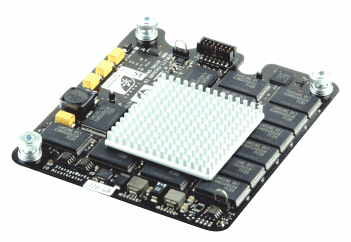This seems pretty neat. Not long ago Fusion IO announced their first new real product refresh in quite a while which offers significantly enhanced performance.
Today I see another related article that goes into something more specific, from Data Center Knowledge –
Fusion-io also announced a new extension to its VSL (Virtual Storage Layer) software subsystem for conducting Atomic Writes in the popular MySQL open source database. Atomic Writes are an operation in which a processor can simultaneously write multiple independent storage sectors as a single storage transaction. This accelerates mySQL and gives new features powered by the flexibility of sophisticated flash architectures. With the new Atomic Writes extension, Fusion-io testing has observed 35 percent more transactions per second and a 2.5x improvement in performance predictability compared to conducting the same MySQL tests without the Atomic Writes feature.
I know that Facebook is a massive user of Fusion IO for their MySQL database farms, I suspect this feature was made for them! Though it can benefit everyone.
My only question would be can this Atomic write capability be used by MySQL when running through the ESX storage layer, or does there need to be more native access from the OS.
About the new product lines, from The Register –
The ioDrive 2 comes in SLC form with capacities of 400GB and 600GB. It can deliver 450,000 write IOPS working with 512-byte data blocks and 350,000 read IOPS. These are whopping great increases, 3.3 times faster for the write IOPS number, over the original ioDrive SLC model which did 135,000 write IOPS and 140,000 read IOPS. It delivered sequential data at 750-770MB/sec whereas the next-gen product does it at 1.5GB/sec, around two times faster.
[..]
All the products will ship in November. Prices start from $5,950
The cards aren’t available yet, wonder how accurate those numbers will end up being? But in any case, even if they were over inflated by a large amount that’s still an amazing amount of I/O.
On a related note I was just browsing the Fusion IO blog which mentions this MySQL functionality as well and saw that Fusion IO was/is showing off a beefy 8-way HP DL980 with 14 HP-branded IO accelerators at Oracle Openworld –
We’re running Oracle Enterprise Edition database version 11g Release 2 on a single eight processor HP ProLiant DL980 G7 system integrated with 14 Fusion ioMemory-based HP IO Accelerators, achieving performance of more than 600,000 IOPS with over 6GB/s bandwidth using a real world, read/write mixed workload.
[..]
the HP Data Accelerator Solution for Oracle is configured with up to 12TB of high performance flash[..]
After reading that I could not help but think how HP’s own Vertica, with it’s extremely optimized encoding and compression scheme would run on such a beast. I mean if you can get 10x compression out of the system(Vertica’s best-case real world is 30:1 for reference), get a pair of these boxes (Vertica would mirror between the two) and you have upwards of 240TB of data to play with.
I say 240TB because of the way Vertica mirrors the data it allows you to store it in a different sort order on the mirror allowing for even faster access if your querying the data in different ways. Who knows – with the compression you may be able to get much better than 10:1 depending on your data.
Vertica is so fast that you will probably end up CPU bound more than anything else – 80 cores per server is quite a lot though! The DL980 supports up to 16 PCI Express slots so even with 14 cards that still leaves room for a couple 10GigE ports and/or Fibre channel or some other form of connectivity other than what’s on the motherboard (which seems to have an optional dual port 10GbE NIC)
With Vertica’s licensing (last I checked) starting in the 10s of thousands of dollars per raw TB (before compression), it falls into the category for me to blow a ton of money on hardware to make it run the best it possibly can (same goes for Oracle – though Standard Edition to a lesser degree). Vertica is coming out with a Community Edition soon which I believe is free, I don’t recall what the restrictions are I think one of them was it was limited to a single server, I don’t recall yet hearing on what the storage limits might be(I’d assume there would be some limit maybe half a TB or something)
